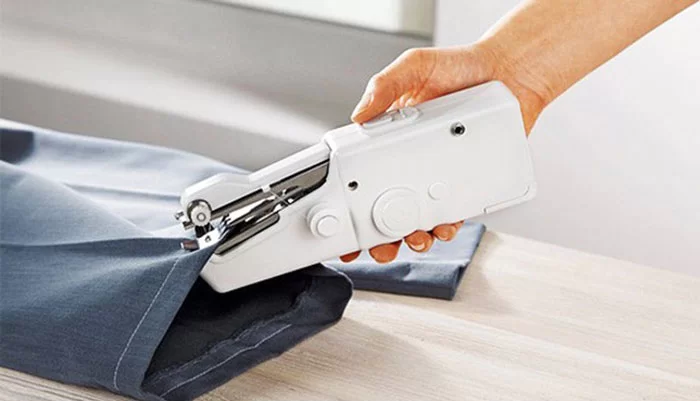Hand Sewing Machine A Compact Solution for Quick Repairs

In the modern age of fast fashion and mechanized textiles, the hand-sewing machine stands out as a blend of traditional craft and portable convenience. A staple for beginners and sewing enthusiasts alike, this compact tool proves invaluable for quick fixes and on-the-spot alterations. Let’s delve into the hand sewing machine intricacies, advantages, and nuances.
Introduction to Hand Sewing Machines
A hand sewing machine is a small, hand-held device that functions much like its larger countertop counterparts but is designed for more straightforward tasks and portability. It’s powered solely by manual effort without electricity or batteries, making it a versatile addition to any sewing kit.
Features of Hand Sewing Machines
Portability: One of the primary benefits is its compact size. Light and easy to carry, it’s perfect for travellers or those without the space for a full-sized machine.
Ease of Use: With fewer components than an electric sewing machine, it’s straightforward, even for beginners.
Versatility: Suitable for various materials, including fabrics, leather, and denim. However, choosing the right needle and thread for the material is essential.
Budget-Friendly: Generally more affordable than electric models, making it an excellent choice for those on a budget or looking for a secondary machine.
Applications of Hand Sewing Machines
- Quick Repairs: Mending tears, sewing buttons, or fixing a hemline is ideal.
- Craft Projects: Great for crafting enthusiasts who enjoy working with various materials.
- Home Decor: Useful for curtain alterations or adding embellishments to furnishings.
- Travel: A must-have for travellers, ensuring garments remain in top shape throughout the journey.
How to Use a Hand Sewing Machine
- Thread the Machine: Start by placing the spool in its holder, then pull the thread through the tension control and thread it into the needle from the outside.
- Prepare the Fabric: Place the material beneath the needle, ensuring it’s flat and taut.
- Sewing: Press down on the machine, allowing the needle to pierce through the fabric. Move the machine steadily along the desired stitch line, maintaining an even pace for consistent stitches.
- Knotting: Once finished, secure the stitch with a knot to ensure longevity.
Maintenance and Care
- Like any tool, a hand sewing machine requires regular care:
- Cleaning: Ensure it’s free from lint, dust, or fabric remnants. A small brush can help remove any debris from tight spaces.
- Oiling: Use sewing machine oil to keep moving parts lubricated. This ensures smooth operation and extends the machine’s life.
- Storage: Store in a dry place to prevent rusting or damage to the machine components.
SEO Tips for Hand Sewing Machine Sellers
If you’re selling hand-sewing machines online, consider these SEO-friendly tips:
Keyword Integration: Ensure terms like “hand sewing machine”, “portable sewing tool”, and “manual sewing device” are seamlessly integrated into product descriptions, titles, and meta tags.
Engaging Content: Share blog posts or videos showcasing the machine’s uses, benefits, and tutorials. This not only provides value to potential buyers but boosts website engagement.
Backlink Building: Partner with sewing blogs, craft influencers, or DIY enthusiasts to gain high-quality backlinks to your product pages.
User Reviews: Encourage customers to leave reviews. Positive testimonials can boost credibility and improve search rankings.
Conclusion
In a world driven by rapid technological advancement, the hand-sewing machine is a testament to simplicity’s beauty. Its compact size, ease of use, and versatility make it an essential tool for both novices and seasoned sewing professionals. Whether for quick repairs, DIY projects, or travel needs, the hand-sewing machine is a classic that remains relevant in contemporary times. Remember, it’s not always about the most advanced gadget on the market – sometimes, the most straightforward tools are the most effective.
